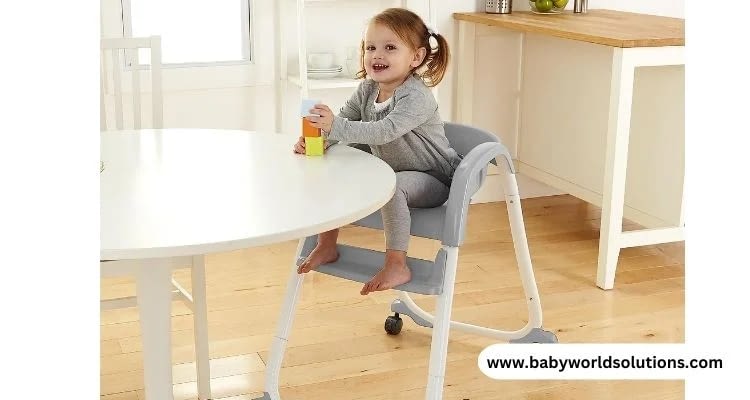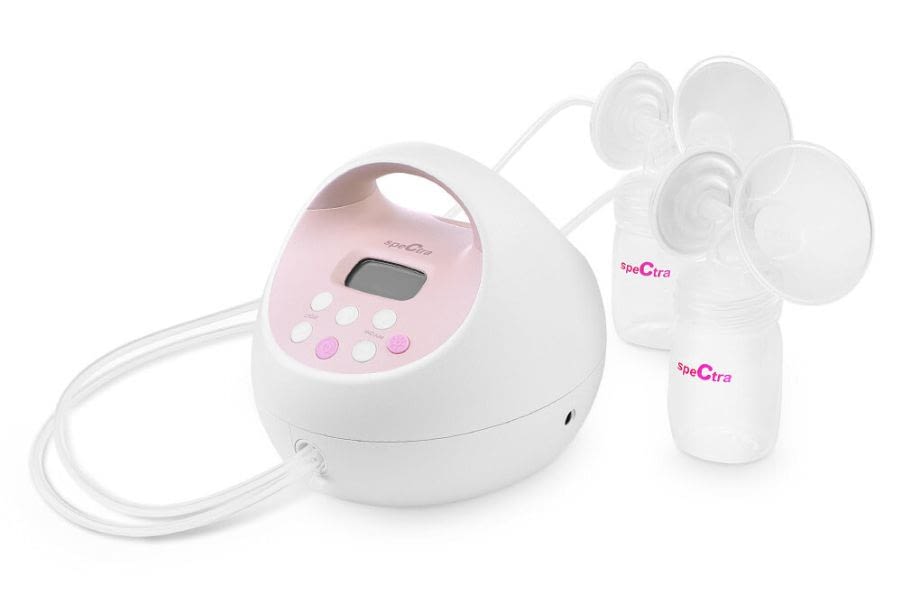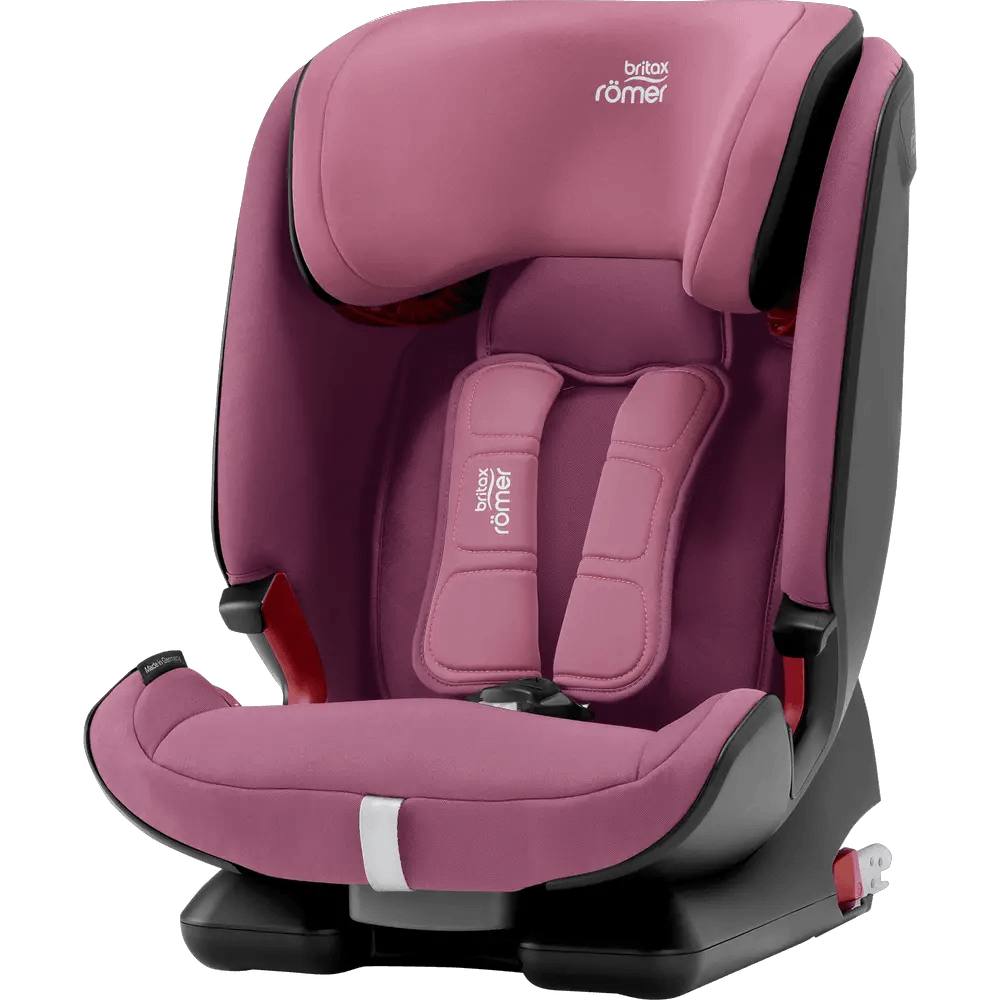As a new parent, you want the best for your little one, and providing them with a safe place to eat is just one aspect of parenting. But at what age should you be transitioning them off the high chair? In this blog post, I’ll discuss the signs that show it’s time to stop using (or start phasing out) a high chair in their diet routine so they can continue on their developmental journey enjoyably.
Read Also: The Best Formula For Colic Babies In 2023
When to stop using a high chair?
Involving your baby in family mealtime is made simpler with a high chair. It aids in minimizing mess and promotes your little one’s sitting posture and self-feeding. Nonetheless, babies will eventually outgrow their high chairs over time.
When it comes to when to stop using a high chair, the answer will vary depending on your child’s age and development. Generally speaking, start thinking about transitioning off the high chair between 18 months and three years old. It is usually when they develop enough coordination to sit independently in a regular chair with minimal support.
Signs to look for: When do kids stop using high chairs?
If you’re looking for signs that your little one is ready to take the plunge, there are a few factors you can look out for when to transition out of high chair. With these ten indicators, you can bid farewell to the high chair at the right time.
Good Sitting Balance
The first and most obvious indicator that it’s time to move on is when your child has developed enough balance to sit upright on a regular chair without wobbling, leaning heavily, and requiring support (such as straps or cushions).
Independent Eating
If your child can feed themselves with utensils without much help and can do so without spilling excessively, this is also a good indication that they’re ready for the next step.
Chair Entry and Exit
They should also be comfortable keeping their balance while sitting and able to independently move in and out of a chair. It shows an outstanding level of independence and motor skills.
Height Considerations
The high chair becomes insufficient if your child’s shoulders have reached the height of the tray table, indicating it’s time for the high chair transition to a bigger seating arrangement.
Discomfort or Restlessness
Your child may appear uncomfortable or restless in their high chair, suggesting they’re ready for more freedom during meal times.
Interest in Family Dining
They are interested in joining the rest of the family at the dining table, possibly trying to imitate your behavior.
Straps and Harnesses
If your child can break free from the straps and harnesses of the high chair, it’s a clear sign of readiness to transition.
Clear Communication
Your child is starting to verbalize or signal their wish to be seated somewhere else during meals, like a regular chair or booster seat.
Outgrowing the High Chair
Your child becomes too big for their high chair, rendering it unpractical or uncomfortable. So, you can switch to an option designed specifically for older kids – such as a booster seat or even a bassinet stroller, designed to keep the child comfortable while providing the necessary support to enjoy the meals safely. Plus, it can be much more convenient than using a traditional high chair since they don’t take up as much space – ideal if you need more storage in the kitchen.
Self-Regulation
Your little one starts to display self-regulation, indicating when they have had enough to eat, a skill that implies they’re ready for more independence at meal times.
Transitioning off a high chair is just one component of raising a child. As long as your little one feels safe and comfortable, you can rest assured that their eating routine will continue to develop in the right direction.
With a bassinet stroller, you can ensure they’re being given the best support while they explore the world around them and learn essential life skills – all from the comfort of their seat! With patience and observation, you can accurately determine when your child can start using bassinet strollers for meals.
Benefits of High Chairs for Babies
Baby high chairs provide several benefits for parents and babies, making them essential baby gear in many households. Below are the various benefits that high chairs bring to the table before deciding when to stop using high chair.
- Safety
- Encourages Independence
- Facilitates Family Bonding
- Easy to Clean
- Provides an Optimal Eating Position
Safety guidelines for when do babies stop using high chair
Safety remains paramount when transitioning your child from a high chair to a regular chair or booster seat. Follow these guidelines to ensure a safe and smooth transition:
- Check the chair’s weight and height limits: Most high chairs have manufacturer instructions detailing the weight and height limits. Ensure your child has yet to reach these limits, which could make the high chair unstable and increase the risk of accidents.
- Ensure the new seating is age-appropriate: Whether moving to a booster seat or a regular chair, make sure it’s age-appropriate for your child. Booster seats should come with safety straps, and traditional chairs should be stable and have high backs for support.
- Supervise mealtimes: Continue to supervise your child during mealtimes, even after they’ve transitioned from the high chair. Children can still choke on their food or risk falling off their new seats.
- Teach safe behavior at the table: Teach your child not to stand or lean back on a regular chair to prevent tipping and potential injuries.
- No playing on chairs: Discourage your child from playing on or around their new chair, as this can increase the risk of falls and injuries.
- Regularly check the chair: Check its condition for any signs of wear and tear that could impact its stability or safety.

When is a child too old for a high chair?
Determining the right time for a child to transition from a high chair to a regular chair varies from child to child, depending on their individual development. What age to stop using high chair? Well, most children are ready to switch at about 2 to 3.
This transition aligns with when children outgrow their high chair’s weight or height limits, as the manufacturer specifies. It’s also often when they display increased independence, better motor control, and the desire to join the rest of the family at the dining table.
Ensuring the new seating arrangement is stable, age-appropriate, and within the child’s comfort zone is essential for a smooth transition.
Tips on making high chair transition to other seating options
After knowing when do you stop using high chair, you can consider these tips for a seamless transition:
- Gradual Transition: Start the transition process gradually. Try seating your child on a regular chair or booster seat at the family table during snack times. Once they are comfortable, extend this to meal times.
- Involve Your Child in the Process: Let your child be part of the decision-making process. Allow them to choose their new booster seat or chair. This involvement can make them more excited and comfortable with the transition.
- Offer Reassurance: Reassure your child that missing their high chair is okay. Validate their feelings and encourage them by emphasizing they are growing and becoming more independent.
- Make Safety a Priority: Always prioritize safety. When selecting a new seating option, consider the chair’s stability, the child’s ability to climb safely, and whether the chair has straps or restraints if needed.
- Maintain Routine: Try to maintain your usual mealtime routine during the transition. Keeping other elements of the mealtime constant can provide a sense of comfort and familiarity for your child.
- Model Behavior: As always, children learn from imitation. Show them the correct behavior, such as sitting correctly in their new chair and encouraging older siblings to model good table manners.
- Patient and Positive Approach: Lastly, be patient. Every child adjusts at their own pace. Celebrate small victories and remain positive to make this new phase a pleasant experience for you and your child.
Benefits of Transitioning From a High Chair to More Independent Seating Options
Transitioning from a high chair to a booster seat or toddler chair has several benefits.
- Promotes Independence: This milestone in a child’s development fosters independence, allowing them to develop table manners while eating with the family.
- Enhances Motor Skills: Children can develop fine motor skills by using independent seating aids. This allows them to safely climb in and out of chairs, improving their physical coordination and balance.
- Boosts Social Skills: Sitting at the same table as adults and older siblings allows for more interaction and conversation, contributing to the child’s social development.
- Saves Space: Independent seating options, particularly booster seats or hook-on chairs, tend to take up less space than traditional high chairs, proving beneficial in homes with limited dining space.
- Offers Longevity: Many independent seating options, like convertible chairs, can adapt to your growing child, serving multiple functions over several years. This longevity provides good value for money, making them a cost-effective choice for many families.
Related: How Much Pedialyte For 6 Month Old?
Creative Ways to Reuse an Old High Chair
After knowing when do kids stop using high chairs? You might wonder what to do with it. Here are some creative ways to give a second life to your old high chair:
- Plant Stand: With creativity and a fresh coat of paint, a high chair could make a unique plant stand. You can place potted plants on the tray—perfect for your living room or porch.
- Side Table: Remove the tray and repaint it to transform your high chair into a side table for your living room or reading nook.
- Doll’s Chair: Children can use the high chair as a seat for their dolls or teddy bears, giving it a role in imaginative play.
- Art Easel: Transform the high chair into an art easel for your budding little artist. Attach a roll of drawing paper to the top, and the tray can hold paints and brushes.
- Book Shelf: The chair can be converted into a small bookshelf for your child’s room. Remove the tray and seat, attach shelves, and fill it with their favorite books.
- Home Décor: With some refurbishing, an old high chair can quickly become a vintage decoration piece, adding a rustic appeal to your home.
If repurposing isn’t your thing, you can always donate the high chair to a needy family or sell it on a local buy-and-sell site.
Alternatives to a High Chair: When to Switch From High Chair to Booster Seat and Floor Seating
While high chairs are a staple in many households with little ones, they aren’t the only option for safe and comfortable seating for your child during meal times. You can consider these while high chair transition.
- Booster Seats: As your child grows and displays increased independence, a booster seat can be a great transition from a high chair. Booster seats are designed to raise your child to table height and often come with safety straps for added security. They’re portable, easy to clean, and fit most dining chairs.
- Floor Seats: Floor seats are suitable for younger infants who can sit up but still need support. They are meant to provide a safe and stable spot for your child to sit, eat, or play on the ground. However, always ensure your child is supervised when using a floor seat.
- Hook-on Chairs: Hook-on chairs are another alternative to high chairs. They attach directly to your dining table and are a perfect space-saving solution. They keep your child at table height, promoting interaction during meal times.
- Convertible High Chairs: These are a long-term, cost-effective solution as they can be converted into different types of seating as your child grows. They typically start as traditional high chairs and can be transformed into booster, toddler, or adult chairs.
However, it depends on your toddler’s weight, age, height, and growth, but parents always need to prioritize their safety. Never leave your child unsupervised when they’re in their seat.
Read Also: Can You Microwave Baby Bottles– Best Explained
Best High Chairs for Babies: Reviews and Comparisons
Here are some top high chair options for you to consider:
- Ingenuity 3-in-1 Highchair: This highchair offers versatility with its 3-in-1 design that transitions from a full-size highchair to a booster seat to a toddler chair. Its machine-washable seat pad and dishwasher-safe tray make cleaning a breeze. However, some parents have found the assembly process to be challenging.
- Grow With Me High Chair: The standout feature of this high chair is its ability to grow with your child. It can be easily adjusted to different heights and reclined to accommodate your child’s needs as they grow. Some users have mentioned that it’s bulkier than other models, so it may not be ideal for smaller spaces.
- Heao High Chair: The Heao High Chair is known for its four reclining positions, seven height adjustments, and three footrest positions. It’s easy to clean and comes with a removable tray. However, it is pricier, and some parents have noted it’s challenging to assemble.
- Xiaobao High Chair: The Xiaobao High Chair is praised for its sturdy and simple design. It offers multiple height positions and a removable tray for easy cleaning. However, it does not come with wheels, so moving it around can be challenging.
- Cybex High Chair: Cybex high chairs are known for their modern design and high-quality materials. They’re easy to clean, with a removable tray and machine-washable cover. Some parents have noted that these chairs are a bit expensive but worth it for the quality and durability.
Each of these high chairs has its merits and challenges. The best choice will depend on your specific needs, space, and budget. Always prioritize safety features, ease of cleaning, and comfort when deciding on the right high chair.
1 Visit today





